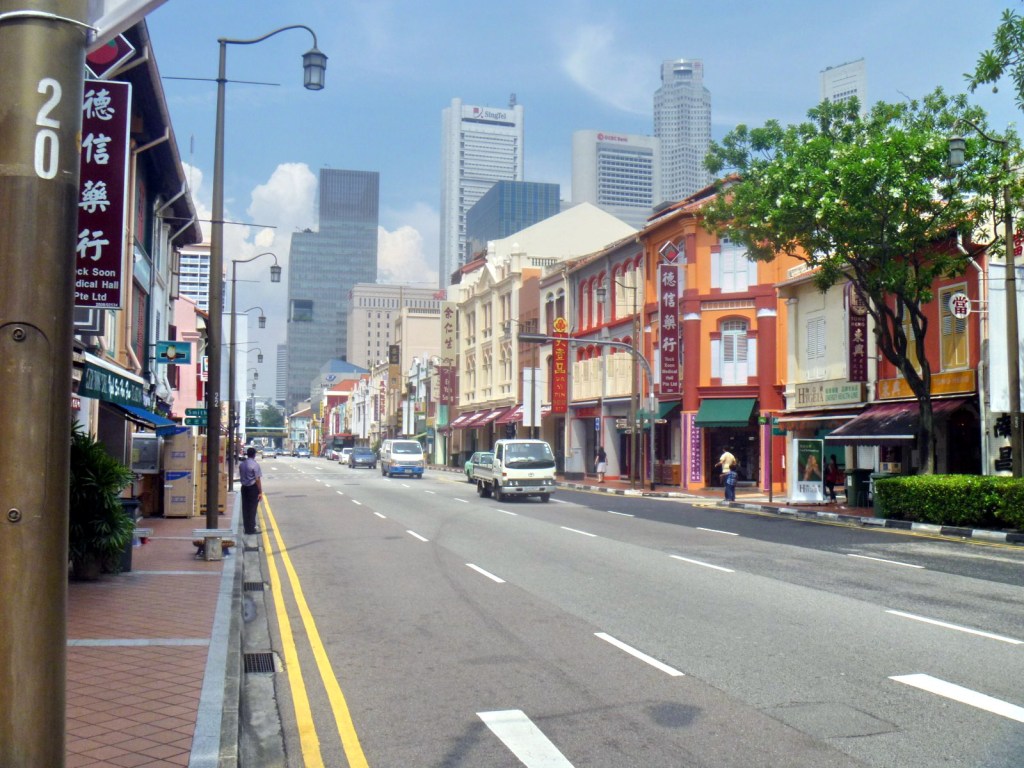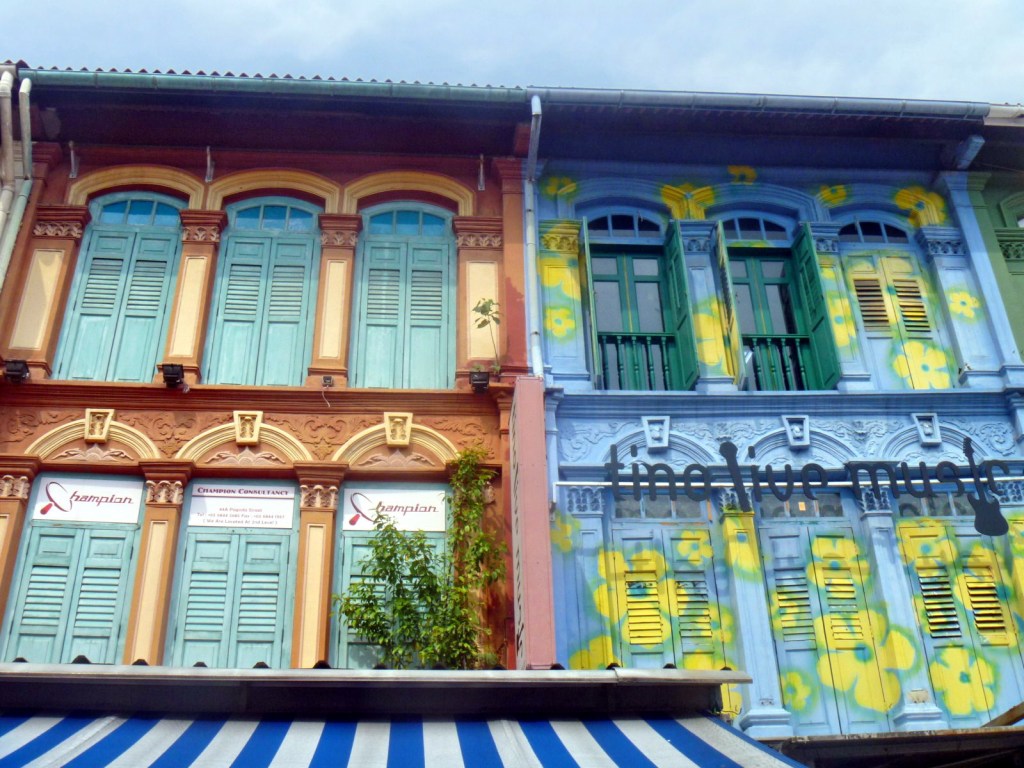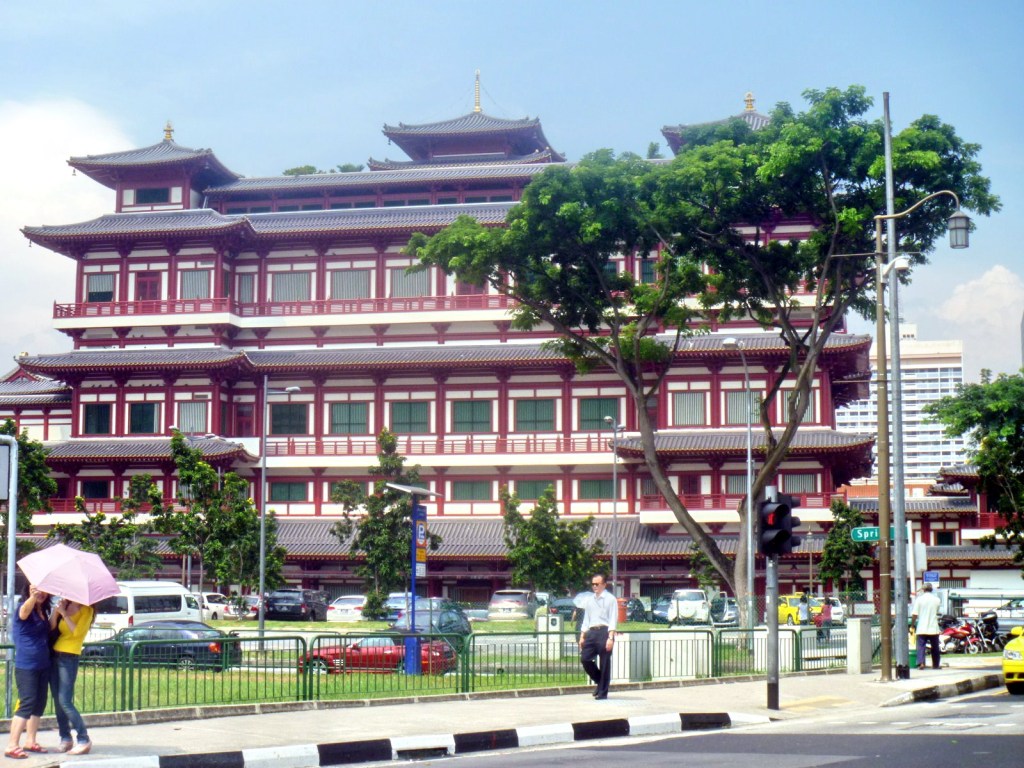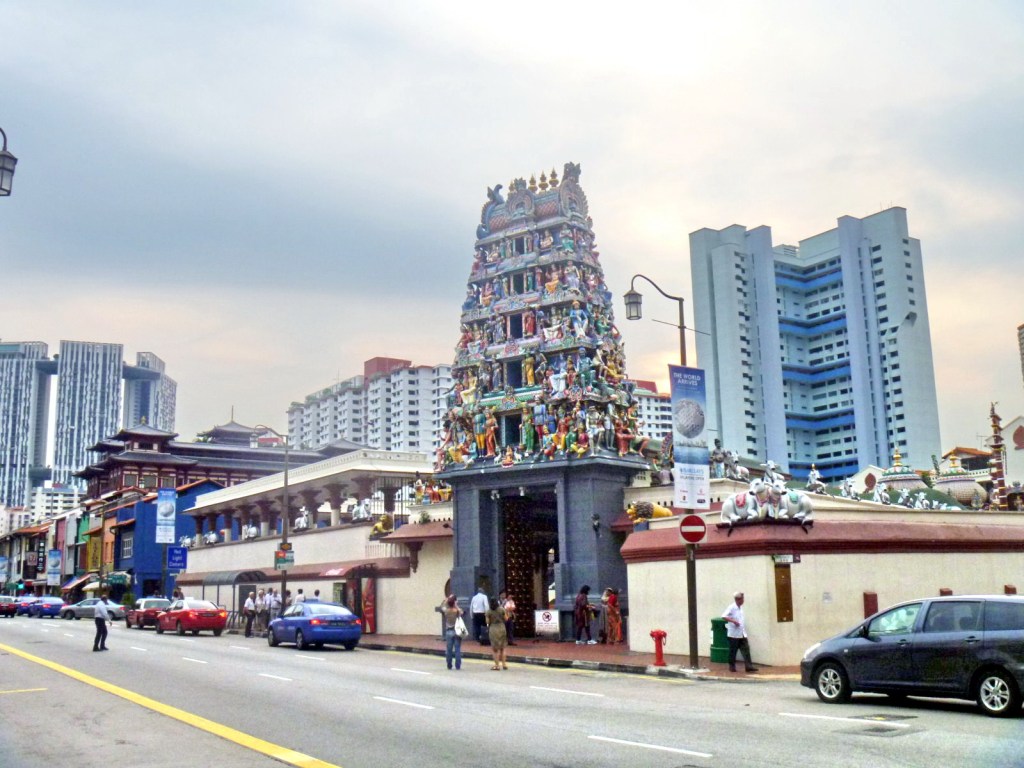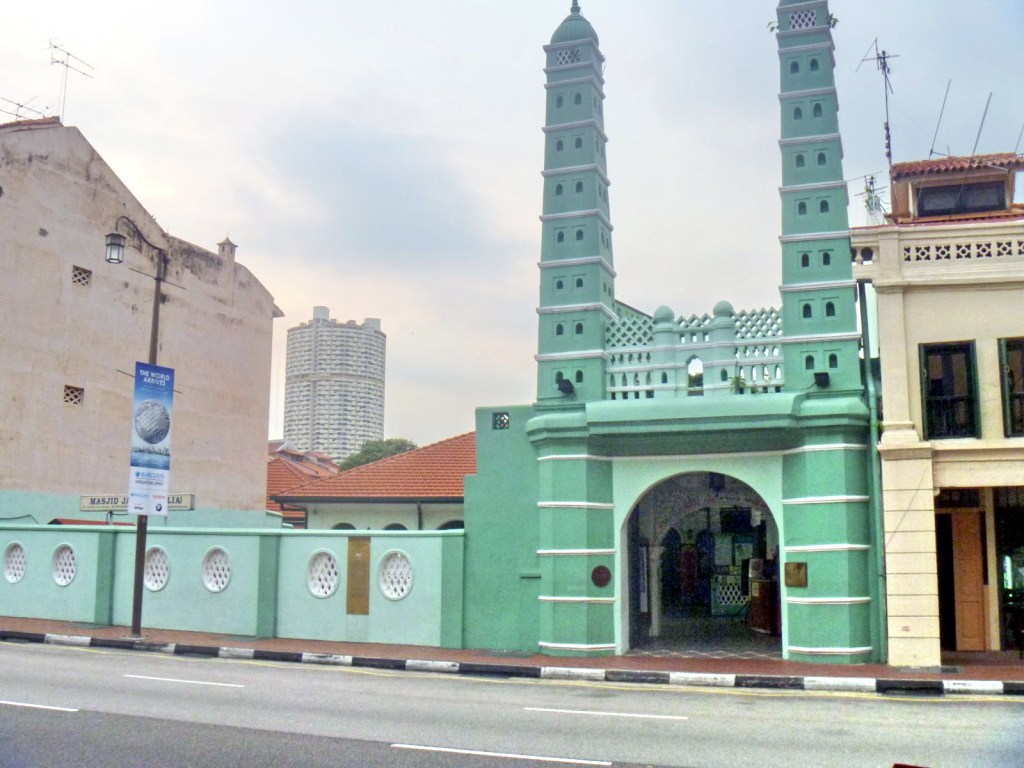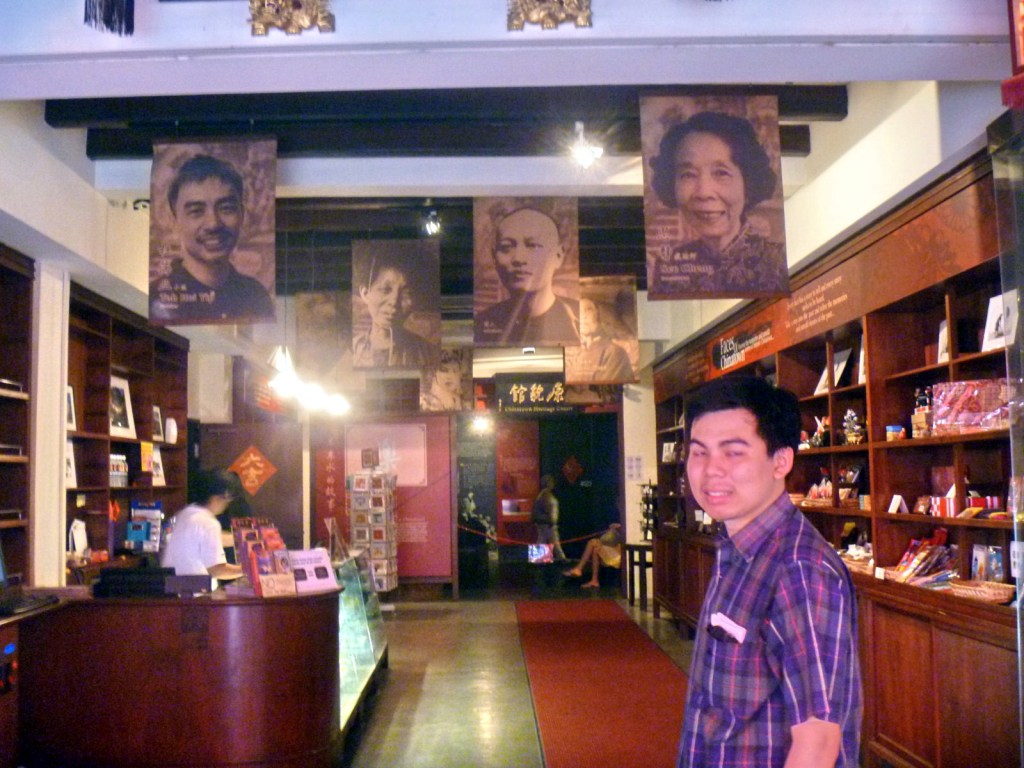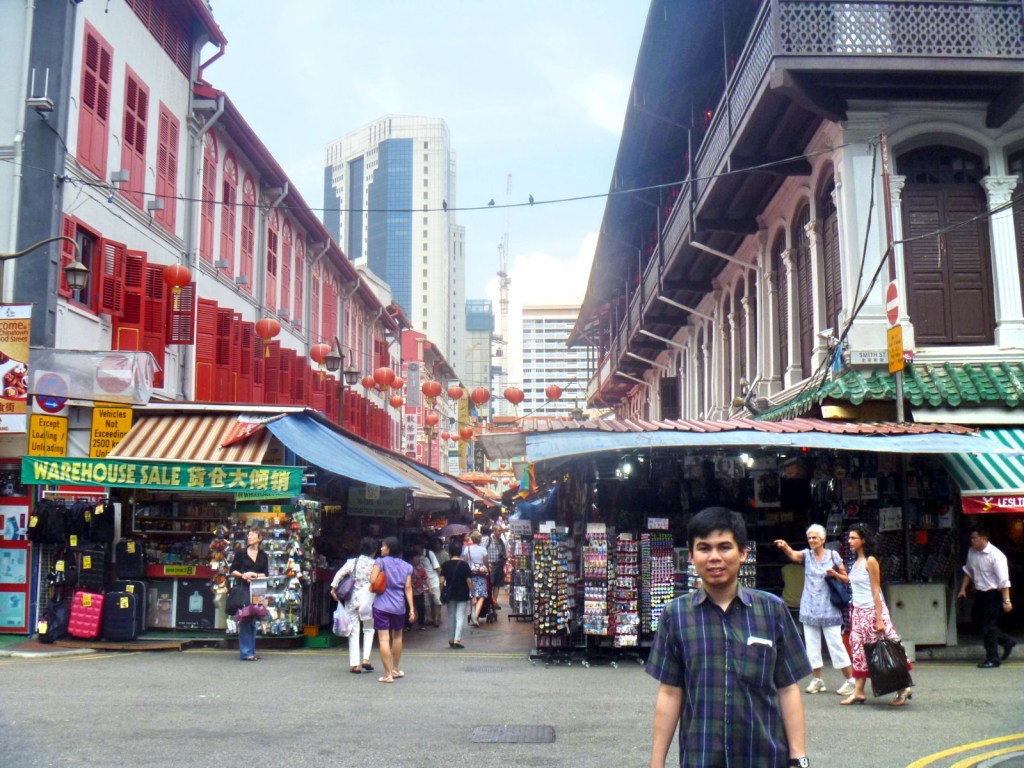From Tanjong Pagar, we crossed over to the Chinatown district via South Bridge Rd. This traditional Chinese precinct is bounded by South Bridge Rd., Kreta Ayer Rd., New Bridge Road and Upper Cross St.. South Bridge Road is unique, being an example of Singapore’s multi-racial and multi-religious community, with the Sri Mariamman Temple (1827), Jamae Mosque or Masjid Chuliam (1830), Fairfield Methodist Church and Buddha Tooth Relic Temple and Museum (2007) are all located here.
In 1843, the area was leased or granted to the public for the building of shophouses, many of which doubled as shops, warehouses, family quarters and workers dormitory. They display strong Fujianese, Teochew and Cantonese influence. Today, relatively little has changed with the original buildings in the area.
Jandy and I first visited the Buddha Tooth Relic Temple and Museum. This S$62 million temple, its architectural style based on the Tang Dynasty, was built in 2007 to house the tooth relic of the historical Buddha found in 1980 in a collapsed stupa in Myanmar.
Sri Mariamman Temple, with its landmark ornamental tower entrance (gopuram), is the oldest Hindu temple in Singapore. More popularly known as Mariamman Kovil or Kling Street Temple, it was first built in 1827 by immigrants from the Nagapatnam and Cuddalore districts of South India. However, unlike my first visit here in 1992, I wasn’t allowed to take pictures inside.
In 1843, the temple was rebuilt in plaster and brick and, in 1962, a new temple structure with intricate sculptural works reminiscent of temple architecture in India was built. The original gopuram, built in the late 1800’s, was rebuilt in the 1930s and, in the 1960s, was repaired and restored with elaborate proliferation of sculptures.
The nearby Jamae Mosque, on the other hand, was built in 1826 by the Chulias (Tamil Muslims). Its unique architectural style is eclectic. The entrance gate is distinctively South Indian while the 2 prayer halls and the shrine are in the Neo-Classical style typical of George Drumgoole Coleman. The mosque was gazetted a National Monument on 29 November 1974.
Kreta Ayer, considered by many to be the heart of Chinatown, houses the Chinatown Heritage Center, Chinatown Night Market and Chinatown Food Street. The newly-restored Chinatown Heritage Center, occupying 3 shophouses along Pagoda St., houses memories and untold stories of Singapore’s early forefathers. The Chinatown Complex, along Smith Street, houses a wet market and shops selling sundry goods. At its second floor food center, Jandy and I indulged in some authentic Singaporean hawker food fare for lunch.
Shophouses do not have a single classification, combining different elements of Baroque and Victorian architecture with narrow wooden jalousies (often with adjustable slats) and decorative fanlights over the windows and pilasters, balconies and plasterwork seemingly Mediterranean in flavor. Many of them are painted in a variety of different pastel colors. Trengganu St. (converted into a pedestrian mall transformed into a night market after dark), Pagoda St. and Temple St. as well as development in Upper Cross St. and the houses along Club St. are examples of this type of architecture.
Buddha Tooth Relic Temple and Museum: 288 South Bridge Rd., Singapore 058840. Tel: 6220 0220. Fax: 6220 1261. Open daily, 7 AM-7 PM. E-mail: services@btrts.org.sg. Website: www.btrts.org.sq.

